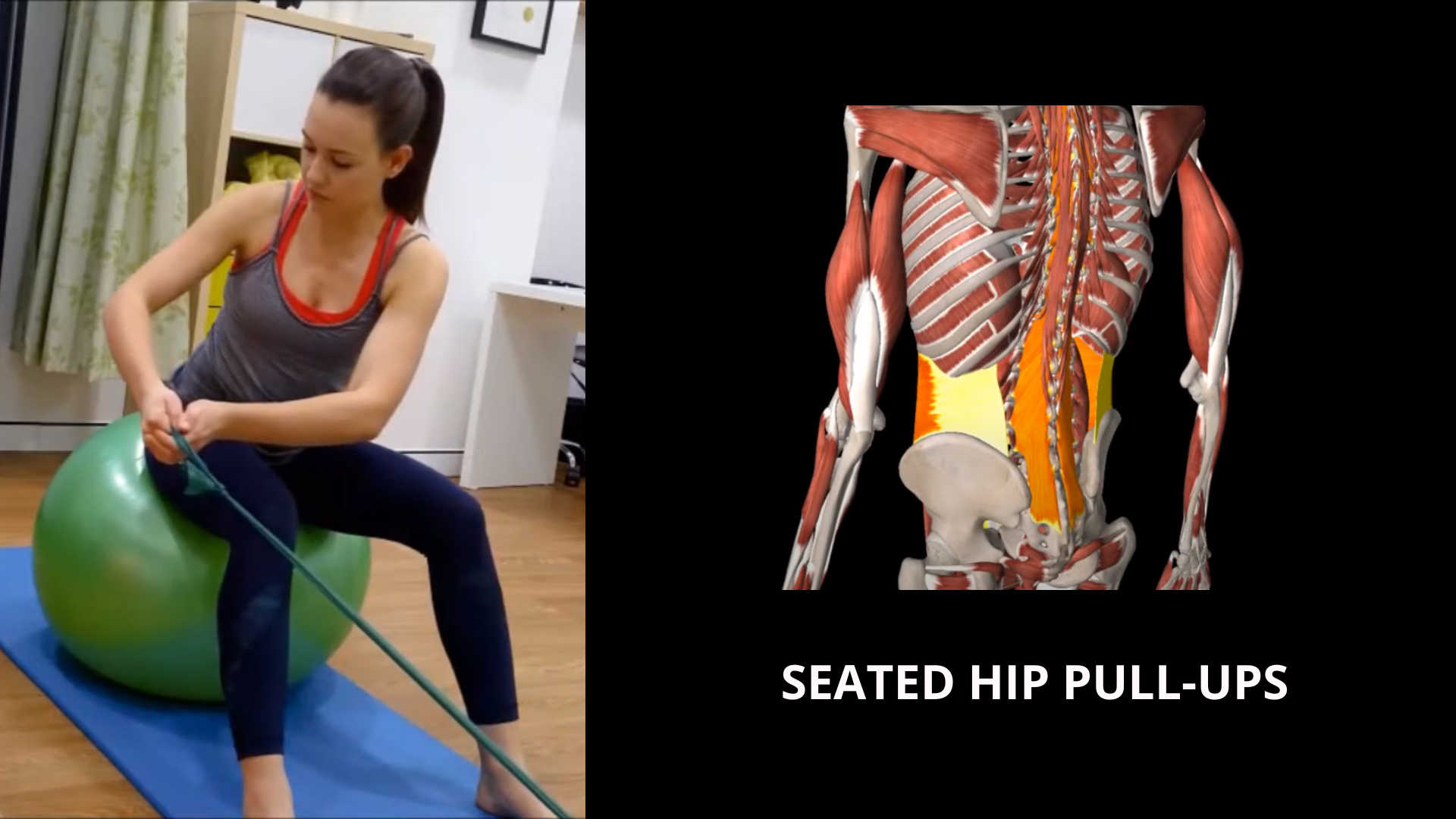Core activation
This supine core exercise targets deep abdominal muscles to support and protect the lower back. Ideal for anyone with back pain, desk workers, and individuals aiming to enhance core stability, it strengthens the core, reduces strain, and promotes better posture and back health.
Core plank with ball roll
The hip and back advanced strengthening exercise targets core stability and lower body strength, essential for supporting functional movement and reducing injury risk. Ideal for newly pregnant women who are recovering from back issues, and anyone looking to improve overall stability. This exercise enhances hip power and back endurance for improved performance and resilience.
Running man with trunk rotation
The Running Man with Trunk Rotation exercise activates and strengthens the side glute muscles, improving hip stability and core control. Perfect for runners, athletes, and individuals looking to enhance lateral hip strength, this dynamic movement promotes balance, coordination, and injury prevention in the lower body.
Seated trunk rotation against resistance band
The seated trunk rotation against a resistance band targets back and core muscles, enhancing rotational strength and control. Ideal for athletes, golfers, cricketers, individuals with back discomfort, and anyone aiming to improve core stability, this exercise builds resilience in the spine and promotes balanced movement.
Seated hip pull-ups
The seated-on-ball pull-ups against a resistance band exercise targets back and hip strength, making it effective for rehabilitation. Ideal for improving stability and control, this movement supports back alignment, strengthens hip muscles, and enhances core engagement for a balanced recovery.
Lunge forward trunk turn
Lunges with trunk rotation while holding a ball enhance knee and back coordination, promoting stability and control. Ideal for building lower body strength and core engagement, this exercise supports knee alignment, improves balance, and strengthens rotational movement for a well-rounded functional workout.
ITB syndrome in long-distance runners and walkers
Ilio-tibial band injury and side-knee pain seen in runners. The involvement of hip and pelvis alignment in running is important.
Core stability and control
How core muscles are protectors of your spine, and how do you make sure that their natural muscle tone supports your posture. The key is not to consciously keep your core activated - that is a very outdated. The key is to have that core muscle tone so it supports you without thinking about. That is core stability and core control!
Meniscus injury may not require surgery
Certain exercises can support knee meniscus health by strengthening surrounding muscles, improving joint stability, and enhancing mobility. Targeted movements for the quadriceps, hamstrings, and hip muscles reduce stress on the meniscus, promoting better knee alignment and resilience. These exercises aid in pain management, prevent further injury, and support long-term knee function.
Better sports performance with controlled and efficient movements
Controlled, smooth movement is essential for preventing musculoskeletal (MSK) pain, as it minimizes strain on joints and muscles. When movement is well-coordinated, it reduces the risk of overloading specific areas, enhancing balance and stability. Developing movement control promotes joint alignment, prevents injury, and supports long-term physical health.












